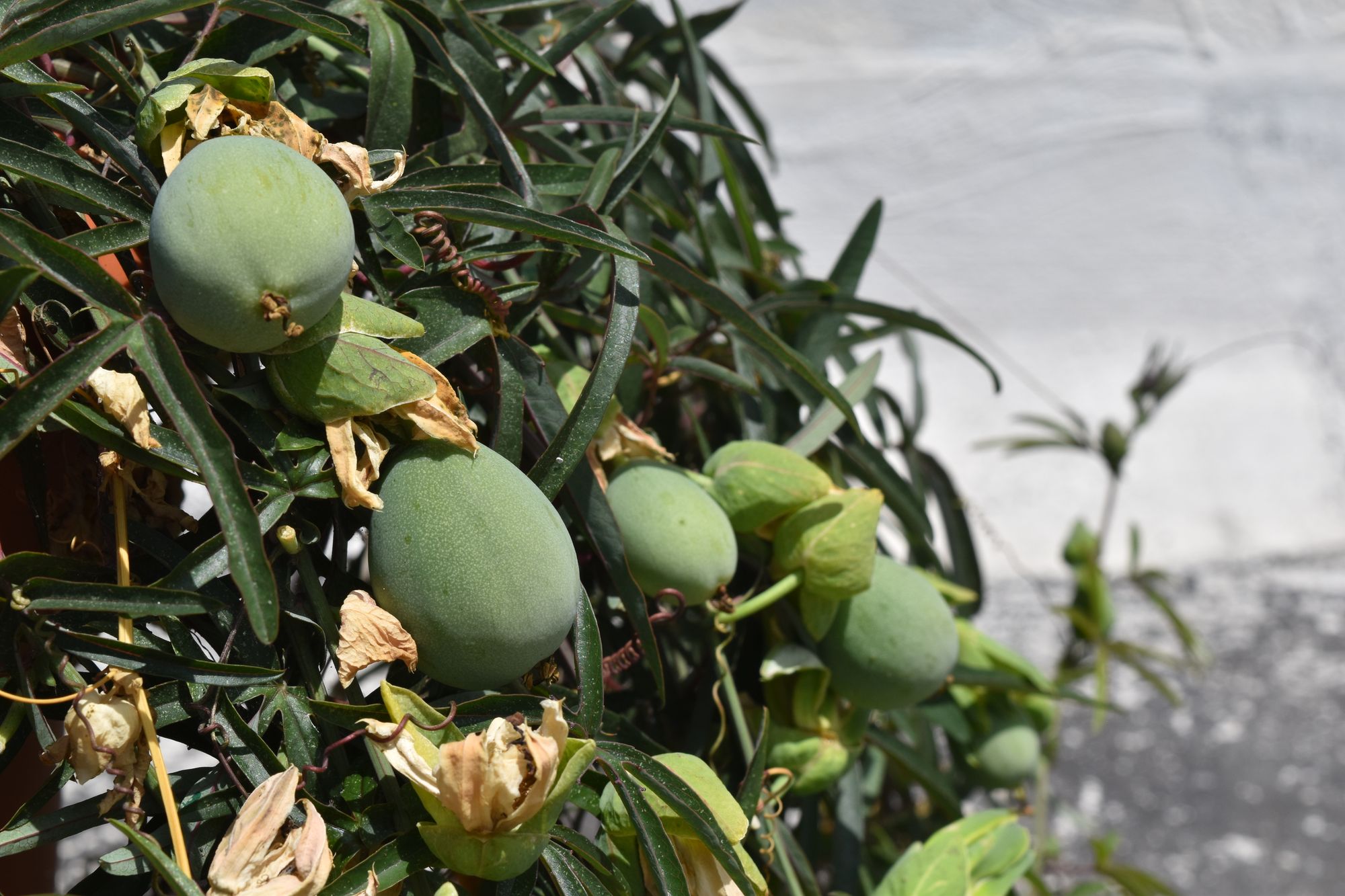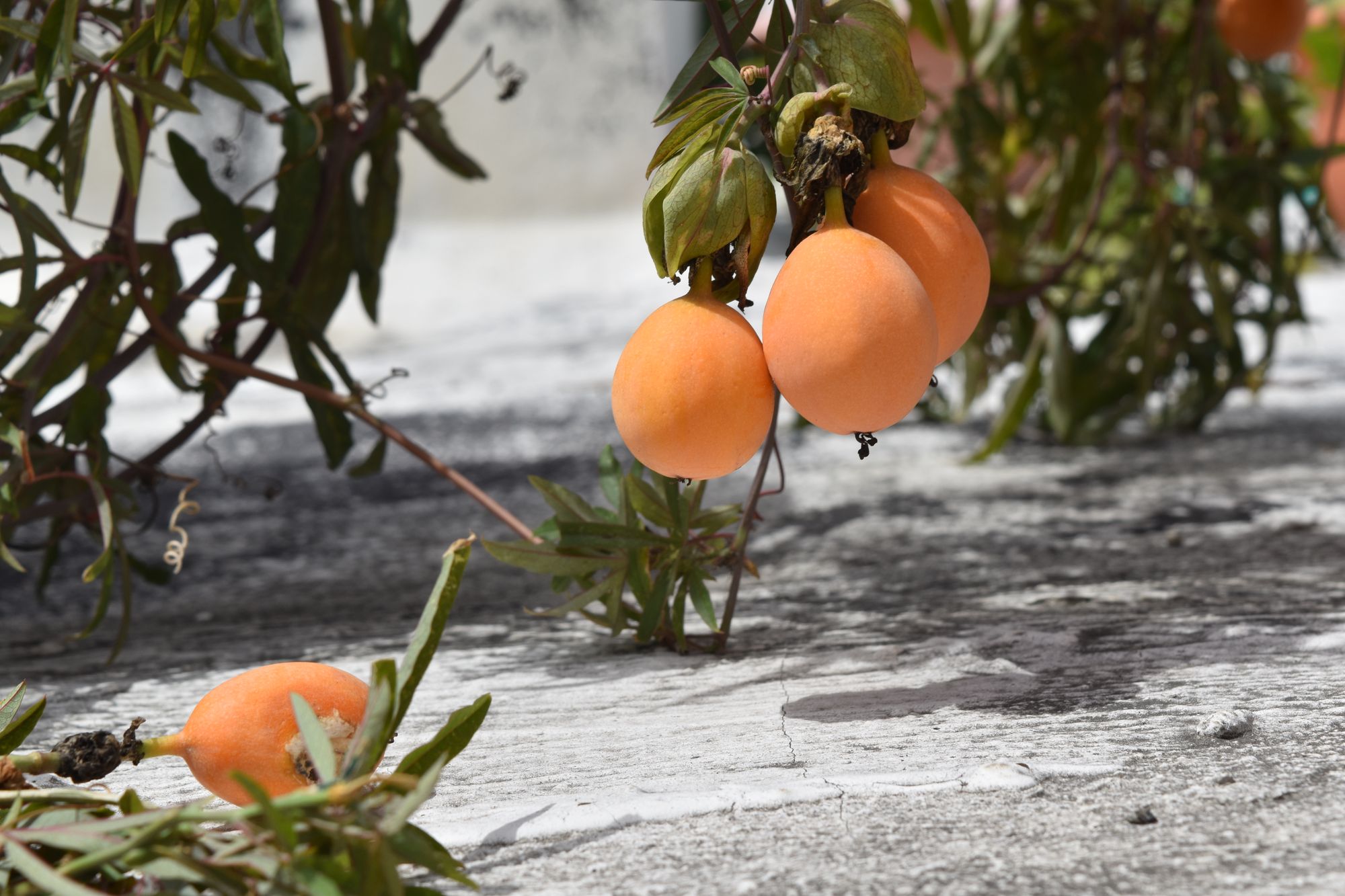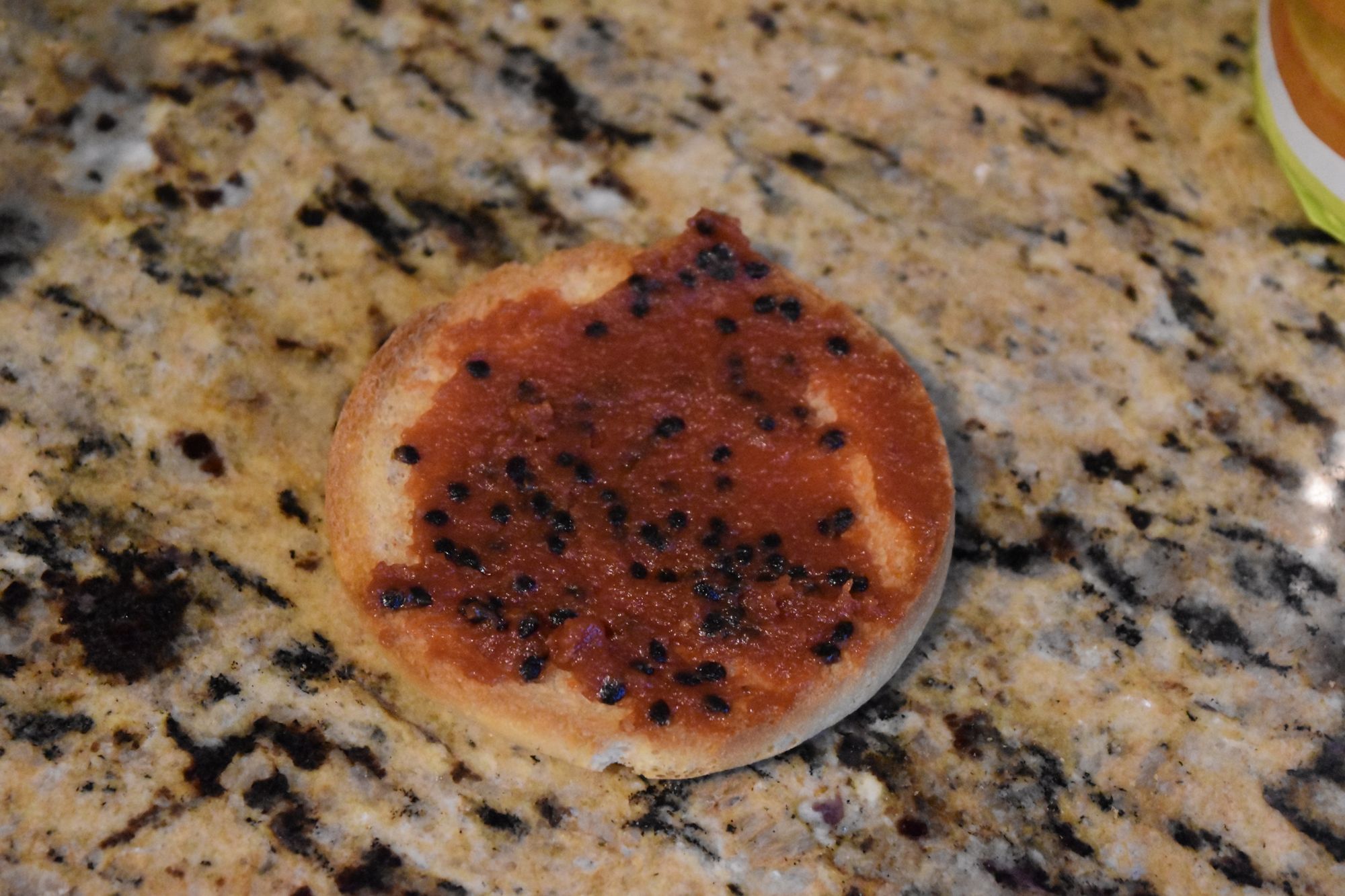Passiflora Caerulea
Passiflora caerulea, it's characteristics, appearances, and uses as pollinator and rootstock

The second stop on our road to developing hybrids is the passiflora that I find to have the strongest pollination power, albeit without being very receptive to receive foreign pollen other than it's own species. Passiflora caerulea will be a common guest as a male pollinator in our hybrid program.
Seeds are widely available both in Europe and the Americas. There is a decent range of variation amongst Passiflora caerulea, mostly visible in the flower. There are flowers with a dark blue ring on the outside of the corona, but there other plants with flowers that have a complete lack of that blue ring. Also, the stigma's are usually dark purple, but there are cases of the stigma being green in some specimen. There are also varieties of Passiflora caerulea where the style is not purple but a mixture of green and purple.
Passiflora caerulea is easy to distinguish amongst different Passiflora. Its dark green thin finger lobed leafs are quite particular. Adult leafs have up to 7 lobes. As mentioned, the pollen of this Passiflora are very good at fertilizing flowers of different species. However, it is not very open to receive foreign pollen and fertilize itself. Evidently, it's easily fertilized by a flower of another genetically different Passiflora caerulea, but it does not fertilize with pollen from other species. It is also not self fertile. However, there are certain techniques to overcome this issues as demonstrated by Raphael Maier.






Passiflora caerulea is very well adapt at growing in the warm Dominican climate. However, it also grows well in other climates, making it one of the easiest Passiflora to maintain. Because it's so strong and well adapt, it can be very easily used as a rootstock, as this plant thrives in the hot Dominican climate. It's a perfect host for grafting Passiflora incarnata. The disadvantage of using it as a rootstock is that it re-sprouts from it's roots which can be unwanted when you're grafting.
In general, the regeneration from its roots is something you want to avoid when growing in containers, as a container will become overcrowded. Obviously the plant is not aware that it finds itself in limited space.






The fruit develops as a green ball that turns orange on its outer skin. The skin is much softer than that of Passiflora edulis forma flavicarpa, and many other passionfruit types. The pulp inside the fruit is red when ripe, and the seeds are smaller than that of flavicarpa. The pulp has an earthy taste, which at times can be sweet, but is predominantly taste-less.
The pulp can be made into jam, by adding sugar, some lemon juice, and some pectin or cornstarch. The jam, as the fruit, will have an earthy, savoury taste, depending on the quantity of sugar added.


